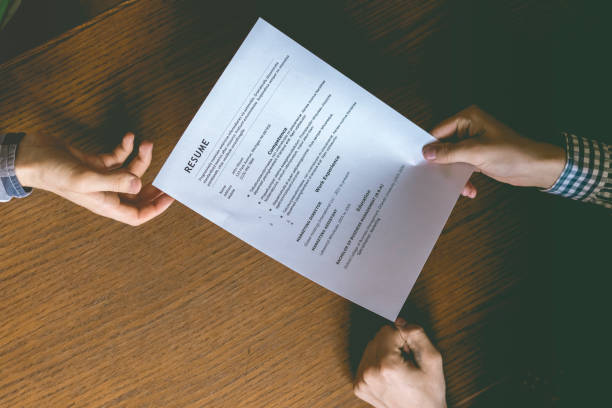In the competitive landscape of the life science industry, crafting a strong resume is essential for standing out amidst a sea of qualified candidates. A well-crafted resume serves as your personal marketing tool, showcasing your skills, experience, and accomplishments to potential employers. Whether you're a seasoned professional or a recent graduate aspiring to enter the field, understanding the key components of a compelling resume is paramount. From highlighting relevant academic credentials and research experience to showcasing technical skills and transferable competencies, every detail plays a crucial role in shaping your candidacy. In this article, we'll delve into the intricacies of writing a strong resume tailored specifically for life science roles. We'll explore essential tips, best practices, and industry-specific insights to help you craft a resume that captures the attention of hiring managers and positions you as a standout candidate in the dynamic and rapidly evolving landscape of life sciences. Whether you're pursuing a career in biotechnology, pharmaceuticals, biomedical research, or any other life science discipline, mastering the art of resume writing is a vital step towards unlocking new opportunities and advancing your professional aspirations.
A resume is a formal document presented to a potential employer that itemizes qualifications and achievements, which is used to showcase the applicant for the job opportunity. When creating a resume, more than one can be developed to effectively highlight the applicant for each position that the individual is applying to.
If you are a student looking for an internship, the resume format does not deviate far from a typical resume. In general, a resume for an internship should include the following:
In this article, we will dive a bit deeper into each of the key features that should be included on resumes for STEM careers.
One of the first steps to writing a resume is selecting the right format to use. Choosing a format is completely up to how you want to present your work. The value of the format is often underscored, but the format you choose to use should be heavily considered. Choosing a unique format, that professionally introduces yourself, can make all the difference in your resume. By capturing who you are as an individual, your format could be the element that differentiates you and makes you memorable to the hiring team. There are 4 common resume formats you might consider:
The chronological resume is the most common type of resume, especially if you have an established work history. When using this format, you should list your jobs and previous experience in reverse chronological order, starting with the current or most recent position you held, followed by the roles preceding it.
When creating this type of resume you should focus on your work history and professional achievements. Make sure to highlight previous lab roles, the work you did in each lab including technical skills, and previous STEM roles such as scribing, working in biotech, or volunteering in a hospital.
The functional resume is an alternative type of resume and functions more as a broken-down cover letter. Using this format, the resume is broken up into sections and, instead of emphasizing work experience, it emphasizes the skills and accomplishments that were gained or the relevant skill sets you have.
With a functional resume, experience is still conveyed but with less detail. For this reason, depending on the position you are applying for, a functional resume might not always be the best format to default to. In the case of applying to a lab or a new STEM role, a functional resume may not be the best way to highlight your competence for a new position, because it does not take previous experiences into account. Functional resumes might be appropriate for recent graduates, individuals with little work experience, or people with large employment gaps because a functional resume highlights skill sets versus previous work.
The combination resume is a hybrid that takes components from both a chronological resume and a functional resume. Placing equal emphasis on both, the combination resume highlights both your skills and your work experience, as well as how they come together. Essentially it will bridge the gap for hiring teams by showing how your professional experience has elevated your skills by implementing what you know or what led to you strengthening your knack in your field. And, since these resumes are in reverse chronological order, they can effectively display how you have specifically built up your skills with each new opportunity.
The targeted resume is designed to cater to a specific audience by targeting a specific job listing. With a target resume, the candidate will write multiple resumes, rewriting and editing their experience and skill set for each job they are applying to. The goal of this resume is to incorporate experiences relevant to a particular position and highlight the skills as they are advertised in the qualifications and job expectations section.
For example, if applying to a lab that investigates cancer research, in your target resume highlight your knowledge of cancer research and biology. Cater to the audience of cancer researchers to exemplify that 1) you have done your due diligence to look into the lab and 2) you are catering to the job. Read some of their publications beforehand, and make sure to highlight your knowledge in this type of resume.
Additionally, in a target resume, you’ll want to keep all of the same components of a chronological resume, but you’ll need to prioritize relevance to the applicable niche industry. If writing this type of resume, it is also helpful to use “buzz words” by using optimized keywords that make you look appealing to the PI, supervisor, or manager.
In any resume, a heading is always needed to identify the person applying for the job and outline the best way to contact them. In your heading, the format might have color, larger text, or stand out in some way. The heading will always boldly present your name, along with any details an individual might use to address you or contact you in the future. Remember to keep it professional, though. For example, a resume heading might look as follows:
First Name, Middle Name, Last Name
Email | Number | [Insert LinkedIn]

🔬Learn About: The Value of a LinkedIn Profile
After developing your heading, there should be a section that lists your education. This part of your resume should reference where you received your education or where you are currently enrolled, what degree earned from this institution, your GPA (could be your major GPA or overall), and the year in which you graduated or are expecting to graduate. Also, for anyone with multiple degrees, it is good to reference all of them, with the highest degree attained coming first. This allows STEM employers to see that you have a baseline level of knowledge needed to work in a Life Science space.
The resume objective is tailored to the job you are applying to and gives a quick introduction statement (2 to 3 sentences) that provides your career intent and goals, along with an insight into why you are the best candidate for the position. This part of the resume is considered optional, however, if you do include one, it should be at the top of your resume.
To make your resume stand out, modify your objective to be tailored to the role you are applying for. Make it personal and specific to the lab, job, or STEM role you are pursuing. Some thoughts to keep in mind when writing your resume objective is knowing why you are applying for a specific position and what makes you marketable for the position compared to other candidates. A great resume objective should provide the reviewer with more information that cannot necessarily be seen or learned from your reading and your experience and background.
Here are two examples of a resume objectives:
1) Resume Objective for a Lab Position in a Cancer Biology Lab:
Dedicated and results-driven, I am a life science professional seeking a challenging role in a cancer biology lab where I can contribute my expertise in molecular biology, cellular assays, and data analysis to advance research efforts aimed at understanding and combating cancer. With a strong academic background in biochemistry and hands-on experience in laboratory techniques, I am eager to leverage my skills and passion for scientific inquiry to make meaningful contributions to groundbreaking research initiatives in cancer biology.
2) Resume Objective for a Job at Tesla in the Engineering Department:
Motivated and innovative engineer with a keen interest in sustainable energy solutions seeking an exciting opportunity at Tesla's engineering department. As an avid enthusiast of electric vehicles and renewable energy technologies, I am eager to apply my multidisciplinary background in mechanical engineering, electrical systems, and product design to contribute to Tesla's mission of accelerating the world's transition to sustainable energy. With a proven track record of problem-solving and project management, I am committed to driving innovation and pushing the boundaries of automotive engineering at Tesla.
Listing your relevant experience is perhaps the most crucial element on a resume. It is the DNA that will separate you from the other candidates.
Using relevant experience on your resume is crucial because it directly demonstrates your ability to perform the duties and responsibilities of the job you're applying for. By showcasing relevant experience, you highlight your expertise and proficiency in areas that are directly applicable to the role, making you a more attractive candidate to potential employers. Moreover, relevant experience provides concrete evidence of your qualifications and suitability for the position, helping hiring managers assess your fit for the role more accurately. Ultimately, including relevant experience on your resume increases your chances of securing interviews and ultimately landing the job by showcasing your readiness and capability to excel in the specific role.
When writing your relevant experience, you want to begin with the name of the organization and your position. Next to your title, include the years you worked in the role for the company, and below this information a bulleted list (2-3 bullet points) describing what you accomplished in your role. Your list might look similar to the one below. Try to avoid listing tasks and, instead, focus on achievements, initiatives, and accomplishments.
Title Date Range Company Name; Location
Keep in mind when creating a resume catered to internships, your experience can be broken up into three elements. These elements include
When describing relevant work experience, only include the categories where you actively held a role. Breaking down each category, work experience, or previous internships should encapsulate how your role made the company successful. You’ll want to emphasize what you accomplished in the time you were with the company and what you gained from your experience.
If you are responding to research experience, it is important to be able to communicate your research in an understandable way. It is crucial to show your relevant lab experience so that hiring managers know how you can contribute to their research or lab, using the skills you already have.
Overall, think of your relevant experiences as a one-page story. This story should tell the future employer what expertise you will bring and how you have been successful in your previous roles. Since employers like to see growth and readiness for the job, hiring managers will look for competency to complete your job given your specific technical knowledge and soft skills.
The best way to address these skills is to create a bulleted list and approach it using the STAR method. The STAR method will tell your employer what work you have been a part of with adjectives and examples that back up your success. In these bulleted lists, every first word should be an adjective effectively highlighting key accomplishments and milestones. Following these adjectives should be verbs that can accompany your action. Remember to pay attention to adjective usage and do not use more than one adjective in a bullet or the same adjective within the resume.
The STAR method is an effective framework for structuring responses to behavioral interview questions or when describing experiences on your resume. STAR stands for Situation, Task, Action, and Result. Here's how to use the STAR method to write a task or part of your resume.
Situation - Begin by setting the context for the experience or task you're describing. Briefly explain the situation or scenario you encountered, providing necessary background information to give context to your actions.
Task - Clearly outline the specific task or objective you were assigned within the given situation. This should highlight what you were expected to achieve or the problem you needed to solve.
Action - Describe the actions you took to address the task or situation. Be specific about the steps you took, the skills you utilized, and the decisions you made. Focus on your individual contributions and highlight any leadership or teamwork skills demonstrated.
Result - Finally, detail the outcomes or results of your actions. Quantify your achievements whenever possible and emphasize the impact of your contributions. Reflect on what you learned from the experience or how it contributed to your personal and professional growth.
Here is an example of how to use the STAR method on a resume:

🔬Learn: How to Sell Yourself in an Interview
The right resume adjectives are powerful because they add detail to your application that creatively describes your skills, experience, and personality. These adjectives also assist prospective employers in understanding where you excel and how you can play a role within their organization. Integrating these words can make your resume intriguing and original which can contribute to increasing your chances of earning a position. Adjectives can be used effectively when:
Using the most effective word
Choosing the right word
Combining adjectives with action
Including important details corroborating your adjectives
Adjective ideas you may consider using can be found below.
After integrating all of your relative experience it is good to highlight your skills, even if some were already mentioned in your descriptions. There are three categories of skills that you can mention.
Knowledge-based skill sets are specific to the occupation. These skills might be technical lab skills, computer skills, different proficiencies in languages, software abilities, coding languages, experience working with kids/elderly/those with mental illness, experience working with animals in a lab-based setting, or mentoring experiences. These skills can be learned and taught but may take time and experience.
When it comes to knowledge-based skills, they may not be widely known by everyone or may not be valuable to every company. Certain occupations, however, might require a specific level of knowledge for certain positions, and having these skills can make you a strong candidate.
Transferable skills, functional skills, or portable skills are versatile traits you take with you from one job to another. These skills might include being adaptable, a leader, a communicator, or creative problem solver. Transferable skills are so valuable because they are often hard to be taught, and they can travel with you regardless of your job.
Personal traits reflect the individual's characteristics and patterns. Examples of these personal traits might include: punctual, open minded, inquisitive, or organized. When you share your traits, the employer can gauge insight into who you are. Since your personality can also be apparent on the resume, you are telling the employer more about your consistency and stability. It's appropriate to include personal traits on a resume when they directly relate to the job requirements or when they demonstrate transferable skills relevant to the position. Including personal traits on your resume can provide a glimpse into your personality and work ethic which can help employers gauge cultural fit and potential for success within the organization. However, personal traits can be viewed subjectively based on different employers, so ensure you are professional when listing these traits.
Your key achievements should only be major achievements earned within your field. This section addresses the awards or honors you have received. The achievements you choose to show should only address those as they relate to your professional position.
Achievements may include publications, conferences attended, presentations given, and any awards received (both with/for funding, and without). With key achievements, you can put a single bullet describing what the accomplishment means. In this same section, you can also mention certifications you can offer that might make you stand out as a candidate. Certifications also tend to go in the education section of a resume. If certifications are mentioned in either the education or achievements section, the same logic applies where a single bullet will describe what you did to earn this certificate.
Lastly, be aware of the Do’s and Don'ts. With any professional task, some dos and don'ts can either make you memorable in a good way or in a bad way. In any case, the same applies to a professional resume. Whether applying for a role in a lab, a startup, or a life science role this list provides what should be included on a resume and what should be avoided.
DO
DO NOT

If your resume stood out and you were able to earn an interview, congratulations! Your next step is setting up an interview. You can look great on paper, but remember you want to show you can also perform. Preparing for the interview can be just as simple, but is just as important.
🔬Learn About: Interview Preparation
Discover the diverse career paths available in the life sciences.
Download Now